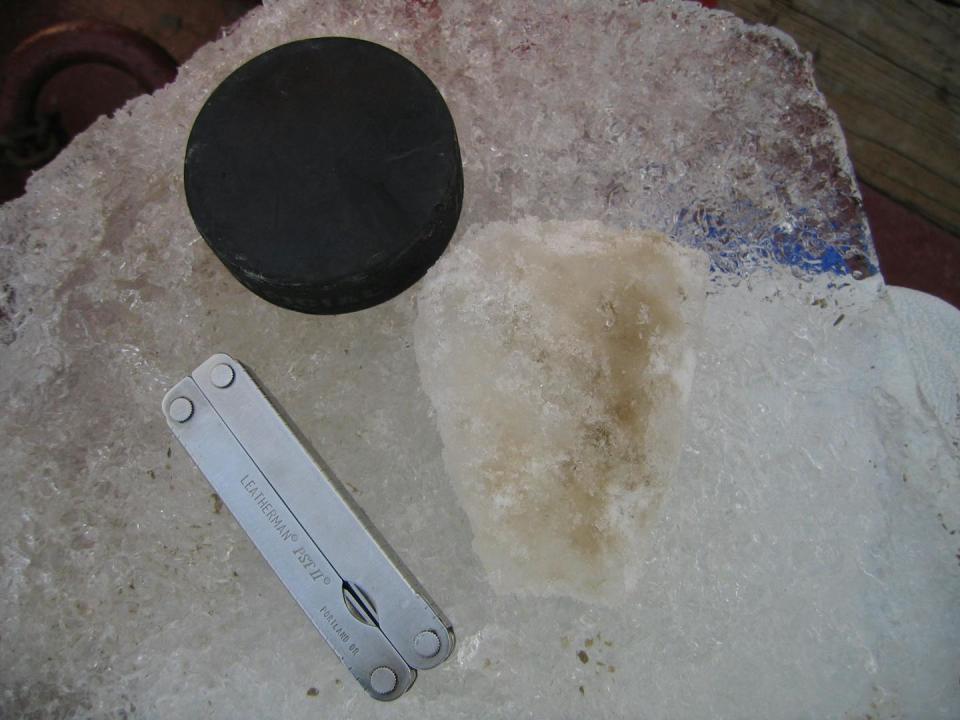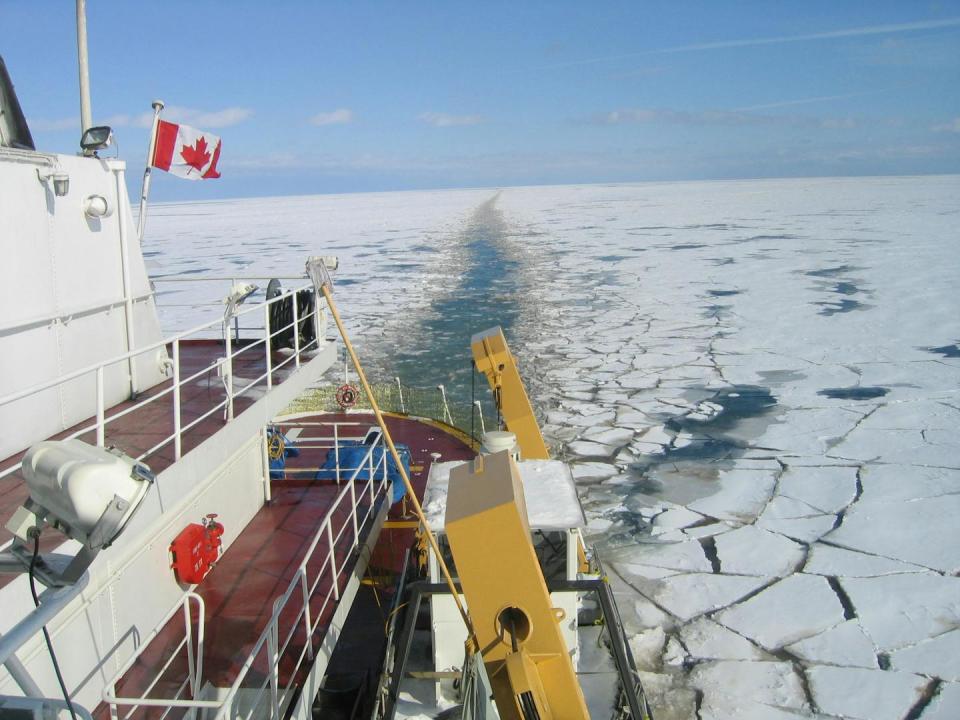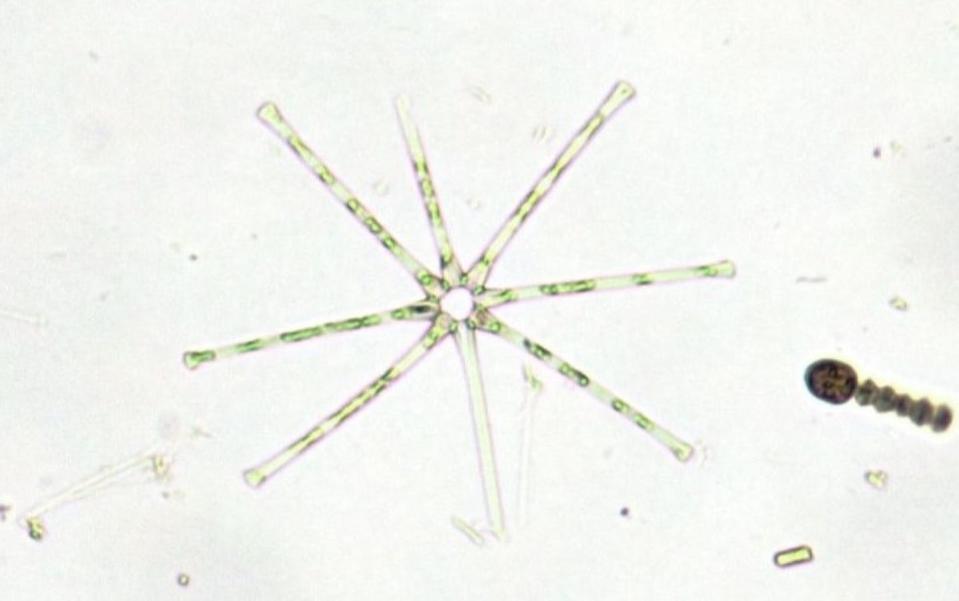Winters on the Great Lakes are harsh — so much so that scientists who work there often focus on the summer months, when tiny microbes at the base of the food chain were thought to be most productive.
However, emerging research is changing our understanding of these winter ecosystems and shedding light on a vibrant world of winter activity just beneath the ice.
Scientists discovered in the early 2000s that communities of diatoms – tiny photosynthesizing algae – thrived in the light beneath the lake’s windswept ice. But it turned out that this was only part of the story.
As winter ice disappears from the Great Lakes — reaching a low point in the winter of 2023-2024 — new analyzes show that some diatoms appear to have another way to create energy and survive in the dark, murky ice-free water until summer. to survive.

These microbes are crucial to the health of the Great Lakes. They clean the water of pollutants and are the first step in the complex food web that supports a fishery that powers part of a regional economy. Changes here could have widespread impacts on the ecology of the lakes and direct economic impacts on surrounding communities.
Rising from the ice
Interest in life under the ice began in 2007, when an international team of scientists aboard a Canadian Coast Guard icebreaker noticed something unusual as the ship made its way through the ice of Lake Erie.
When the ice broke, dark brown water seeped out of the lake. It was teeming with diatoms.
Research on winter microbes had been sporadic in the past, but limnologists – scientists who study lakes – did not have the tools to fully understand the microbes’ behavior until recently.


For the past five years, the U.S. Department of Energy’s Joint Genome Institute has supported a molecular biology project that has determined the RNA sequence of all microorganisms from samples collected from Lake Erie to determine how these organisms survived the winter months and developed. may or may not be able to adjust. , to future climate scenarios. These efforts are now revealing new observations about how diatoms use light.
Use of proteins that are commonly found in the eyes of animals
We normally think of diatoms as organisms that use sunlight to convert carbon dioxide into living matter through photosynthesis. In the summer they are ubiquitous in the Great Lakes, where they help fuel the lakes’ billions of dollars in sport and commercial fisheries.
During winter, diatoms can create energy from the light filtering through the wind-swept ice. However, in winter, when ice is not present, the diatoms are mixed with lake water that can sometimes best be described as chocolate milk. Light has difficulty penetrating this cloudy water, and the diatoms receive less of the specific wavelengths of light that drive photosynthesis.




We collected samples in the winter of 2019-2020 to compare how diatom communities in open water differed from those under ice. We were surprised that, when no ice was present, some diatoms used a different form of energy acquisition – powered by a pigment called rhodopsin.
Rhodopsins are light-responsive proteins that are perhaps best known as an important part of animal eyes. In marine systems, it was shown in 2001 that these proteins are involved in generating energy in bacterial cells, specifically in the production of adenosine triphosphate or ATP. ATP is a chemical that organisms use as an energy source for many cellular processes, which has led to its nickname as the ‘molecular currency’ of living cells.
It now appears that some Lake Erie diatoms use this energy-generating mechanism to increase light-limited photosynthesis in ice-free winter months.
Differences in the two processes can be important: Photosynthesis helps cells capture carbon to produce new biomass, as well as cellular energy in the form of ATP. In rhodopsins, while ATP is produced, there is no direct carbon fixation.
This means that cells can likely survive, but not grow, in these murky waters. But in biology, survival is everything: if an organism’s competitors don’t survive the harsh conditions, but the organism does, there will be more nutrients when conditions improve. In view of this, the rhodopsins in these diatoms appear to be both a survival mechanism and an opportunity to survive in dark, ice-free winter conditions.
Watch how lake life evolves as the climate changes
As we enter a warmer climate and an ice-free era for Lake Erie and other northern temperate lakes, these data suggest that over time, the diatoms that thrive in ice-covered lakes may be replaced by diatoms containing rhodopsins during the winter months.
The consequences of this change are potentially manifold: small changes at the base of the food web could impact fisheries. In addition, some diatoms are known to produce compounds that are toxic to wildlife and humans.
We currently only have conjecture about how changes in algae species will change fishing, tourism and coastal resource management in the long term. How algae communities change over time is a response to many factors, and light is just one of them. But getting the chance to witness this change from the start creates a unique opportunity to understand the effect of a warming climate on the Great Lakes and others like it around the world.
This article is republished from The Conversation, an independent nonprofit organization providing facts and trusted analysis to help you understand our complex world. It was written by: Steven Wilhelm, University of Tennessee; Brittany Zepernick, University of Tennesseeand Robert Michael McKay, University of Windsor
Read more:
Steven Wilhelm receives funding from the National Science Foundation, the National Institute of Environmental Health Science, the Department of Energy, the National Oceanographic and Atmospheric Administration, and the Simons Foundation.
Brittany Zepernick receives funding from the Southeastern Conference Emerging Scholars Program through the University of Tennessee.
Robert Michael McKay receives funding from the Natural Sciences and Engineering Research Council of Canada. He serves on the Great Lakes Science Advisory Board of the International Joint Commission.